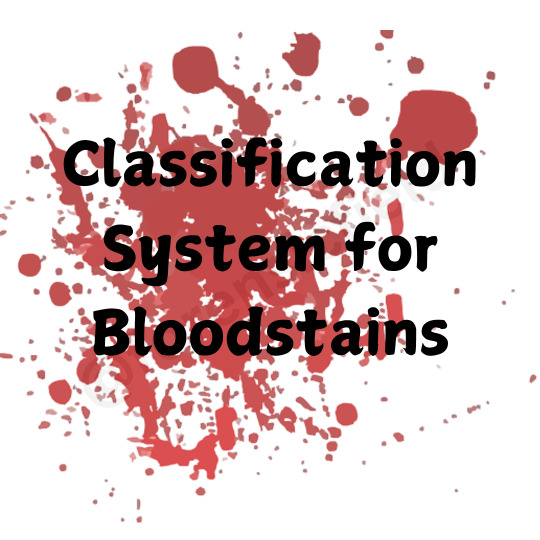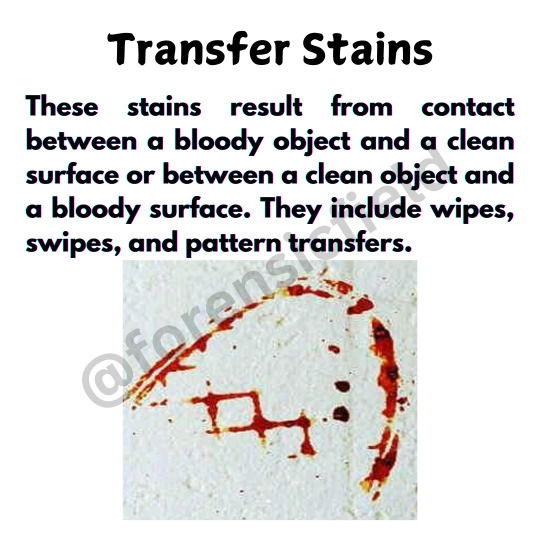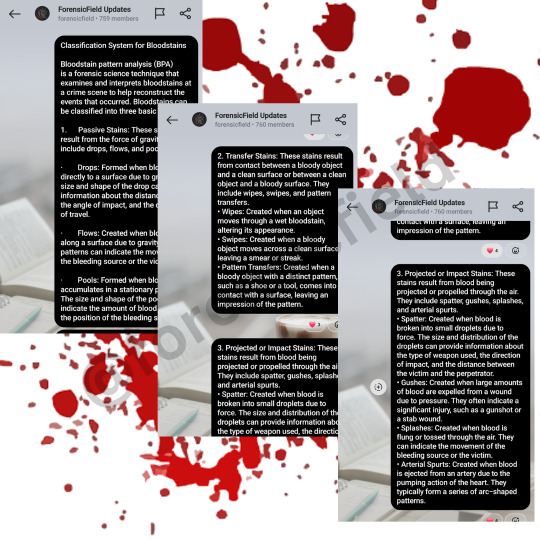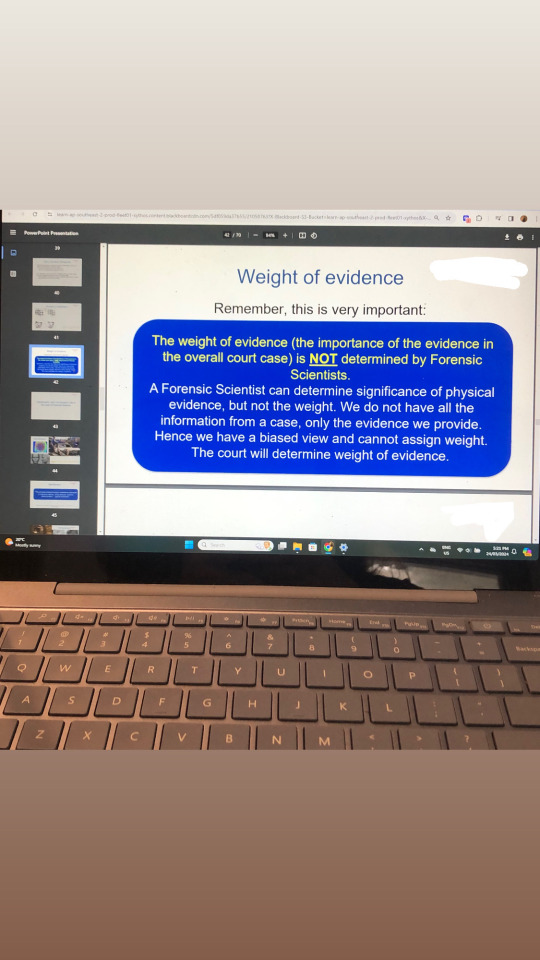#Forensic science
Explore tagged Tumblr posts
Text

Nicolae Minovici is known as the doctor who hanged himself for science.
He had studied at the Faculty of Medicine and Bucharest where he developed a keen interest in forensic medicine and criminology. He was particularly fascinated in the changes in the body during violent deaths, especially hanging which was a common form of execution at the time.
After his graduation, he founded the first Institute of Legal Medicine in Bucharest and his work laid the foundation for modern forensic practices in Romania and influenced the development of criminology and forensic pathology in Europe.
Among his contributions to science was his experiments in hangings. In an effort to understand the physical and physiological effects of hanging, Minovici decided to conduct experiments on himself. Beginning in 1904, he hanged himself multiple times under controlled conditions. To avoid death, he used a system of ropes and pulleys that allowed him to control the pressure exerted on his neck.
The results of Minovici's self-experiments were groundbreaking. He described the sensations he experienced during hanging, including a tightening sensation in the throat, severe headaches, vision changes, and an overwhelming feeling of impending death. He also observed that the face quickly became congested and discolored due to the interruption of blood flow, a condition known as facial cyanosis.
Minovici's work contributed valuable insights into the mechanics of hanging and its effects on the body. His findings were published in a monograph titled Studies on Hanging, which became an important reference for forensic scientists and criminologists. His research helped to better understand the processes of asphyxiation and the physical signs of hanging, which were crucial for accurate post-mortem examinations in cases of suspected hanging.
364 notes
·
View notes
Text
The fact that a ghost gun was involved has me messaging my colleagues and all of us going "we told you so". 7 years ago some of my forensic colleagues and their grad students wanted to do research on ghost guns that were a byproduct of the 3d printing community. We had already seen a number of them in cases and we could see the writing on the walls. Kits and parts were being made with 3d printers and the prevalence would only increase as the technology got better and more accessible. Guess what happened? Cease and desist letters and threats to careers.
That's right. It's a poorly kept secret that any firearm related research is immediately quashed by the NRA. The resulting data and conclusions almost never fit their narratives. That's why we can't do any proactive research and are relegated to reactive analyses. It means we can't make informed decisions and can only advise after the fact.
They take every form of legal action they can, and then make unofficial threats to your career. I know quite a few forensic specialists whose careers have flatlined due to their research on firearms.
It's a running joke that bright eyed and bushy tailed grad students will enter the field wanting to do research on firearms for one reason or another and then experience the utter shock of their PIs being like "I tried that 30 years ago, here's my letter, and here's your other committee member's letter, and this person's letter, etc, etc..." The student always asks why and the only response you can give is "you know why."
But here we are.
Years later with a ghost gun being used in a high profile murder and we'll likely not get any sort of recourse in our unofficial research ban. But we will continue to go to our conferences and just shake our heads in an "I told you so" kind of way.
#forensic science#forensic science problems#Seriously. So much stuff we're prevented from researching due to bias
114 notes
·
View notes
Text
This post is for anyone interested in forensic science.
Forensic science is separated into what I call The three B’s Blood, Bodied and Bones. I’ll lay out the pros and cons for each option and things that will make each one easier.
Blood: easier if you like physics and math.
Pros: Learning liquid physics, easier to keep a consistent work schedule, smells the least bad
Cons: if you don’t like math it will suck, getting comments about Dexter EVERY TIME you say your job, sometime really mentally taxing.
Bodies: easier if you have an interest in medicine and surgery and if you have a strong stomach around guts
Pros: Learning some things that can apply in first aid situations, learning how to identify COD (kinda cool), medical examiner pays really well
Cons: Sometimes smells the worst, hardest on people emotionally, requires really steady hands, usually less consistent work schedule.
Bones: easier if you are comfortable with various temperatures, like puzzles, have a strong gut for rotting stuff and are fine with bugs
Pros: least emotionally taxing, you aren’t working for law enforcement, you get to travel, you get to solve puzzles, you get to discover historical sites with skeletons.
Cons: sometimes the body isn’t fully decomposed and it stinks, a LOT of bugs, never home, grave robbing jokes.
They are all good options it’s just depends on what you like
#forensic science#forensic science nerd#forensics#forensic analysis#forensic anthropology#blood splatter#medical examiner#csi#body analyst
31 notes
·
View notes
Text






#forensics#criminology#forensic science#evidence#criminalistic#forensic field#crime#forensic#crime scene investigation#blood stain
29 notes
·
View notes
Text
To everyone who asked what the high school math they were learning was good for, the Pythagorean theorem is actually used in forensic science to find the point of origin of blood splatter 😊
#forensic science#silence of the lambs#hannibal lecter#the silence of the lambs#shitpost#hannibal#mathblr#science side of tumblr
62 notes
·
View notes
Text
#tiktok#luigi mangione#acab#all cops are bastards#all cops are pigs#all cops are bad#tw police#forensics#forensic science#forensic#lawyer#rebmasel
27 notes
·
View notes
Text


24.03.2024
.
I did a bit of forensic work and ignored the essay I have due in 3 weeks 🥲
I haven’t really been doing the best mentally so I’m taking it all one step at a time (studying enough to keep me from falling too far behind, but not enough to burn me out). Friendly reminder: there is no shame in prioritising your mental health!
And yes, my pen is shaped like a syringe (it used to have red liquid inside but it dried up :/)
#study#study aesthetic#study blog#study motivation#studyblr#studyspo#forensic notes#forensic science
72 notes
·
View notes
Text
Forensic science funfact #1 : mummification
Tw: suicide, court medicine, discussion of dead bodies, suicide mention, explaining a ritualistic suicide method in the cultural context
After death, the body in need to mummificate needs to be kept in certain conditions: mostly very warm, away from the external factors (bugs, animals, chemicals, mold etc).
Its a long term process, usually more than 1-2 years post mortem, but there were cases where the mummification process took 2 months! -in this case, the body was found in home, with the body perfectly mummified under the covers.
There is also a process of ritual suicide of automummification called sokushinbutsu. Those people use specific diet (vaguely eating only seeds for years) and gradually commiting the suicide by actively trying to get their body into the perfect conditions for mummification.
The final step of this process is locking themselves in their final coffin where they finish the process of gradually starving themselves to death while entering the staye of deep meditation.
Another funfact: DID YOU KNOW THE REASON WHY THEY ARE SO LITTLE MUMMIES FROM THE ANCIENT TIMES IS BECAUSE WE USED TO EAT THEM IN XI CENTURY. Let me repeat, WE ATE THE MUMMIES.
Gore/sensitive photos:

Auromummified body

77-years old man found in sauna
#academia#criminology#dark academia#forensic science#university#digital artist#criminal minds#forensics#forensicscience#cw: gore#gore lover#mummification
24 notes
·
View notes
Text

Best criminal minds character❤️❤️❤️
66 notes
·
View notes
Text
Batman Script wip
I think he deserves to be a little[very] autistic
I'll probably tidy up the diologue here and there, maybe add some more idk i just need to get it out of my head first
(BTW this is for my 1920's batman comic of which the current working title is "Gotham: In a Bottle". Since I finally got the arching done I'm getting to woek on the script and will probably be sharing bits of it here and there)



btw you can buy blood from butchers, I know this bc I took a forensic science class and we bought 16 gallons of it . . .
#cw blood#script#wip#work in progress#batman#dc batman#batman wip#Bruce Wayne#autism#austistic batman#alfred#alfred pennyworth#headcanon#batfam#Gotham in a bottle#in a bottle#1920's#forensic science#blood spatter#forensic science hyperfixation#hyperfixation#comic#comic script#my work
31 notes
·
View notes
Text
This is how i feel studying forensic science and criminal investigation knowing I am never going through the security clearance for the FBI lmao (this post might just be it)

103 notes
·
View notes
Text

Petechiae represent multiple pinpoint areas of bleeding. They are not specific for asphyxia deaths, but are frequently present in certain types of asphyxia.
60 notes
·
View notes
Text
I was just reminded that the art collective Forensic Architecture exists and once again I’m disgusted.
For those of you who don’t know, it’s a collective of various artists who play at forensic science, conduct “forensic investigations”, and then make art exhibits of their “results”. Their reports and exhibits will make statements such as “the evidence shows that X is linked to Y” but the statistical output that they share will show something like a 5% confidence in the match.
That's right. They make art exhibits of their "investigations".
You want to talk about fandomizing tragedy? Making “forensic investigations” into art exhibits is the bougiest version I can think of, and it's only to serve an echelon of people who enjoy that kind of stuff. If any of the people in this art collective had a background in forensic science they would have taken ethics courses that would tell them how horrid putting on an art exhibit like this actually is. You don't honor the victims by putting on an art show for the rich and powerful to gasp and faint over so that you can fundraise for your next show.
Their founder has even stated that they’re not in forensics but “counter-forensics” and "counter-investigation". They eschew the practices and norms of the scientific community for telling their own version of investigative “truth”. They’ve even gone so far as to quote post-truth philosophies in their work and the controversial Nietzsche quote about there being no facts, only interpretations. Both are dangerous philosophies to hold in forensic science as it presents the evidence as subjective rather than objective. This is why they're an art collective and not a forensic science research group as they purport, they're rejecting objective scientific outcome for subjective interpretation.
You can go to the group's website and they have profiles on all of their team members. Almost every person is labeled as a "researcher", but once you click on their profile it quickly tells you that they're an artist, designer, activist, or some combination of the three. No mention of any scientific background whatsoever. That indicates their ability to actual conduct forensic science research is not great as they don't have any training or education on the methods involved. In fact, their entire program and personnel are out of an arts college with no science programs or faculty outside of anthropology.
That's weird, right?
A group that supposedly made a new discipline of forensic science, according to them, has no members with actual backgrounds in forensic science or scientific disciplines relating to it?
None of the team member profiles detail any scientific background that would be relevant to forensics outside of a few people with engineering and computer science degrees. Neither of the aforementioned disciplines typically train you in forensic practices anyway unless you take certain courses. Because these profiles are public you can go and checked LinkedIn profiles and find the CVs for each member as well. Guess what? No forensic science or relevant scientific backgrounds listed there as well.
But for some reason this art collective has received funding from governments and NGOs for "creating" a new discipline of forensic science. They're a "trusted" source for forensic investigations. That's worrying. That's terrifying.
I'm a forensic scientist and to make an objective field based upon methodology and empirically supported practice into one that is subjective and throws out the empirical aspects is terrifying. Everyone should have klaxons going off in their head whenever they see Forensic Architecture's name appear in a publication. I've reviewed a few of their "investigations" and they are rife with bad practice, manipulation, and misinformation. In fact, it appears that they present their work in art exhibits more than they testify to it in court due to their methods being questionable and their intent being not to help the investigation but to be a "counter-investigation" that can be judged by the court of public opinion. What do I mean by this? In many of their investigations the collective does not actively have personnel at the scene. Meaning they are not getting first hand physical evidence and measurements. Now, it's not always possible to be there personally and as such you rely upon crime scene techs, investigators, and other personnel to collect this stuff. Typically if you're a consultant or outside firm you are getting the evidence after it has been collected for analysis. You want the physical evidence in your hands as much as possible so that you can analyze it properly. Sometimes you have to request going to the scene yourself to get the measurements and evidence you need. The worst type of evidence to receive is honestly digital images of the scene as you are now having to analyze something a general investigator, who likely does not have specialized training, took a picture of.
In situations where you cannot have the physical evidence for analysis and you are left with only photographs then a forensic expert should be tempering their responses and conclusions. You cannot confidently come to conclusions based simply on looking at photos. This is something that is hammered home repeatedly in forensic programs and professionals.
In the case of warzone crime scene analysis, as FA typically does, they are, typically, not collecting evidence first hand from the scene, nor are they receiving evidence secondarily from actual trained investigators (when they are there first hand they also rely excessively upon expensive technology instead of best practices). They rely upon third party photos and satellite imagery to do their analysis.
Time and time again, forensic experts who rely solely upon digital photos and media to make their analysis get ripped apart by a good lawyer. Being confident in conclusions based upon photographs is the easiest way to lose your credibility. But again, the art collective playing forensic scientist primarily puts their work in art exhibits where they are not scrutinized by experts. Hell, I don't think I've ever seen them present at one of our professional conferences nationally or internationally (I would love to be a fly on the wall when that happens).
And finally, if this was an actual credible scientific group that produced credible investigations and had created a brand new field with methodology that stood to scrutiny there would be publications in the forensic journals detailing this. Especially from the "creator" of the field Eyal Weizman.
Guess what there isn't?
But in the end all they’re actually doing is crime scene reconstruction from people who want to cosplay as forensic scientists.
(for more reading on the group see this article that highlights issues with FA from another perspective https://www.artnews.com/art-in-america/features/forensic-architecture-fake-news-1234661013/)
#Forensic architecture#forensic science#Forensic Architecture is not made of forensic scientist but of artists#Forensic Architecture admittedly does not follow established forensic practices and principles#This is the group that Western Activists will share as “proof” for the “crimes” of Israel#Their rejection of scientific methodology is all you need to know about the veracity of their “proof”#They use tertiary evidence in their analysis and very rarely provide an actual report on their methodology - which is horrific#FA is being used by antisemites as an “authority” and they should be summarily ignored for poor scientific practice
64 notes
·
View notes
Text
forensic science class shenanigans
In Junior Year (3rd) of High School I took a forensic science class. Normally classes had around 30 kids, but this was a new class at the school so there was only 15 weirdos in this one.
Loved the class, loved the teacher, learned a lot. Here's what happened.
Found out how absolute shit human memory is
Found out what bugs will eat me when I die
CUE existential crisis
Talked A LOT about geometry and what blood spatters can tell you
Talked about how if you purposely use your nondominant hand to kill someone, you can tell they are using the wrong hand. (with blood spatter patterns)
Laughed about criminals' stupidity
Laughed about police's stupidity
Put fiber and our own hair under a microscope
Was able to (fairly) accurately determine if classmates had EVER dyed and/or bleached their hair before.
Got to find out that my town is into choking, they just aren't good at doing it safely.
CUE existential crisis
Got to hold a brain (a real one, VERY wrinkly VERY textured)
Got to hold a swollen heart (some sort of heart disease)
Got to hold lungs (VERY spongey)
Get to touch fat (slimy and greasy, ew)
CUE existential crisis
Decided I never wanted to smell formaldehyde EVER AGAIN
Got to collect evidence from a real crime scene my teacher put together for us in an empty class room.
There were bloody footprints from shoes she borrowed from a fellow teacher.
Gave a presentation on who was the culprit and why for our final.
In the presentation my friend presented the last few slides
At the same time as the presentation, a Senior event was happening (involving the whole school) so I'm Feeling 22 played over the loud speakers during our presentation.
As my friend was finishing the slide the song was on full blast so the end of our presentation went like:
"And Mr. C took the hammer," EVERYTHING WILL BE ALRIGHT "and he swung once," IF WE JUST KEEP DANCING "twice, three times!" LIKE WE'RE TWENTY TWO-O-O
Thanks Taylor, you really enhanced our forensic science final lol
#taylor swift#forensic science#high school#science#science and math#math and science#true crime#tw death mention#cw death mention#tw body parts#cw body parts#school shenanigans#adhd#memory bs#actually adhd#neurodivergent#neurodiversity#neuroscience
55 notes
·
View notes
Text
Forensic Linguistics
Here is a glossary of key terms related to Forensic Linguistics:
1. Forensic Linguistics: The application of linguistic knowledge, methods, and techniques to legal and criminal investigations, including the analysis of spoken and written language for legal evidence.
2. Linguistic Analysis: The systematic examination and interpretation of language, including its structure, usage, and meaning, to uncover insights and evidence in legal contexts.
3. Authorship Attribution: The process of determining the author or origin of a written text by analyzing linguistic features, such as writing style, vocabulary, and grammar.
4. Linguistic Profiling: The analysis of language to create a profile of an individual, including their demographic information, cultural background, and psychological characteristics.
5. Discourse Analysis: The study of language in use, focusing on how language is structured and used in different contexts, such as conversations, interviews, and legal proceedings.
6. Stylistic Analysis: The examination of linguistic features, such as word choice, sentence structure, and tone, to identify patterns and characteristics that can help identify the author or origin of a text.
7. Phonetics: The study of the physical aspects of speech sounds, including how they are produced, transmitted, and perceived.
8. Phonology: The study of the organization and patterns of sounds in languages, including the rules and structures that govern their use.
9. Morphology: The study of the structure and form of words, including how words are constructed from smaller meaningful units called morphemes.
10. Syntax: The study of the structure and arrangement of words to form grammatically correct sentences and phrases.
11. Semantics: The study of meaning in language, including how words and sentences convey ideas and information.
12. Pragmatics: The study of how language is used in real-world contexts, including the role of context, social factors, and implied meanings in communication.
13. Linguistic Variation: The study of how language varies across different speakers, dialects, regions, and social groups.
14. Sociolinguistics: The study of how language and society interact, including the social and cultural factors that influence language use and variation.
15. Language Documentation: The process of recording and preserving endangered languages, including their grammar, vocabulary, and cultural context.
16. Expert Witness: A professional who provides specialized knowledge and expertise in a particular field, such as forensic linguistics, to assist in legal proceedings and provide expert testimony.
17. Legal Discourse: The language and communication used in legal contexts, including legal documents, court proceedings, and legal arguments.
18. Miranda Rights: The rights of individuals in the United States, as established by the Supreme Court case Miranda v. Arizona (1966), which include the right to remain silent and the right to have an attorney present during police interrogations.
19. Linguistic Evidence: Language-based evidence, such as written documents, recorded conversations, or linguistic analysis, that is used to support or refute claims in legal proceedings.
20. Linguistic Proficiency: The level of skill and competence in a particular language, including the ability to understand, speak, read, and write in that language.
#forensic#criminology#forensics#forensic science#evidence#criminalistic#forensic field#crime#crime scene investigation#forensic Linguistics
34 notes
·
View notes
Text
What are your current top 3 YouTube Tabs?

I'm beginning to see my tabs are my way of tracking my special interests. I wanna know what yours are right now.
My rotation: Aviation, Social Science, Media Theories and Commentary, Forensic Science, ancient Civilizations (Mesoamerica atm), Mountaineering (Everest specifically), Art and Craft and currently... Woodworking.
No I don't have any wood. I don't have a workspace for woodworking. I live in a little unit that is already suffocating under the weight of my expanding art supplies.
Goddamn I wanna get into woodworking so bad.
#youtube#special interest#crime#aviation#forensic science#art and craft#diy hacks#rewatches#comfort watches#audhd#actually autistic#autism#autistic#autistic things#neurodivergent#adhd#late diagnosed autistic#questions
12 notes
·
View notes